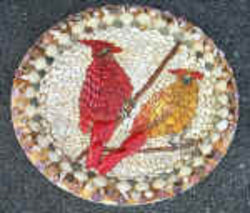Why do you smile back at a baby?
Whether you're young, old, rough, gentle, male or female, your heart melts when a baby beams a smile at you. You turn soft in face of a genuine smile of innocence, warmth, and purity of heart and mind.
Babies naturally smile during sleep or in the process of falling asleep from the day they’re born. An interesting inborn behavior that is void of emotional content. After a month, babies smile in response to social interaction - auditory stimuli before visual. It’s delightful to watch a small curve of the lips signaling the beginning of a developmental journey that transforms an innate reflex into an expression of joy.
Why do we smile?
In our complex society, people smile for all sorts of reasons, only one of which is to signal happiness. Many kinds of smiles come from our feelings – the fear smile, the dampened smile, the contempt smile, the miserable smile, nervous smile, etc.
Psychologist Dr David Lewis said that a happy smile can trigger powerful emotions that help us remember other happy events and make us feel good - optimistic, positive and motivated. He also pointed out that a fake smile can be detected and construed as untrustworthy and hypocritical.
This is what French anatomist Duchenne de Boulogne wrote about the happy smile: “The emotion of frank joy is expressed on the face by the combined contraction of the zygomaticus major muscle and the orbicularis oculi.” He also concluded that “… fake joy, the deceitful laugh, cannot provoke the contraction of this latter muscle.. . .The muscle around the eye does not obey the will; it is only brought into play by a true feeling, by an agreeable emotion.”
In the Scientific American article, The Mirror Neuron Revolution: Explaining What Makes Humans Social, neuroscientist Marco Iacoboni explains: “. .. we are hardwired to smile, a real smile can’t be faked and it is contagious because our brains have mirror neurons that make us “simulate” within ourselves the states of others around us.”
As a universal language expressed in the form of a gesture that greets and welcomes other people, a smile can make all the difference in the world. It creates an atmosphere of unity and camaraderie. A smile of joy brings sunshine to the sad, hope to the discouraged, and rest to the weary.
Most importantly, a smile is contagious, just like laughter. So, pass it on…
Whether you're young, old, rough, gentle, male or female, your heart melts when a baby beams a smile at you. You turn soft in face of a genuine smile of innocence, warmth, and purity of heart and mind.
Babies naturally smile during sleep or in the process of falling asleep from the day they’re born. An interesting inborn behavior that is void of emotional content. After a month, babies smile in response to social interaction - auditory stimuli before visual. It’s delightful to watch a small curve of the lips signaling the beginning of a developmental journey that transforms an innate reflex into an expression of joy.
Why do we smile?
In our complex society, people smile for all sorts of reasons, only one of which is to signal happiness. Many kinds of smiles come from our feelings – the fear smile, the dampened smile, the contempt smile, the miserable smile, nervous smile, etc.
Psychologist Dr David Lewis said that a happy smile can trigger powerful emotions that help us remember other happy events and make us feel good - optimistic, positive and motivated. He also pointed out that a fake smile can be detected and construed as untrustworthy and hypocritical.
This is what French anatomist Duchenne de Boulogne wrote about the happy smile: “The emotion of frank joy is expressed on the face by the combined contraction of the zygomaticus major muscle and the orbicularis oculi.” He also concluded that “… fake joy, the deceitful laugh, cannot provoke the contraction of this latter muscle.. . .The muscle around the eye does not obey the will; it is only brought into play by a true feeling, by an agreeable emotion.”
In the Scientific American article, The Mirror Neuron Revolution: Explaining What Makes Humans Social, neuroscientist Marco Iacoboni explains: “. .. we are hardwired to smile, a real smile can’t be faked and it is contagious because our brains have mirror neurons that make us “simulate” within ourselves the states of others around us.”
As a universal language expressed in the form of a gesture that greets and welcomes other people, a smile can make all the difference in the world. It creates an atmosphere of unity and camaraderie. A smile of joy brings sunshine to the sad, hope to the discouraged, and rest to the weary.
Most importantly, a smile is contagious, just like laughter. So, pass it on…









